Beyond the ThinkPad: How Lenovo is innovating with foldables and rollables
Foldables, slidables, and rollables
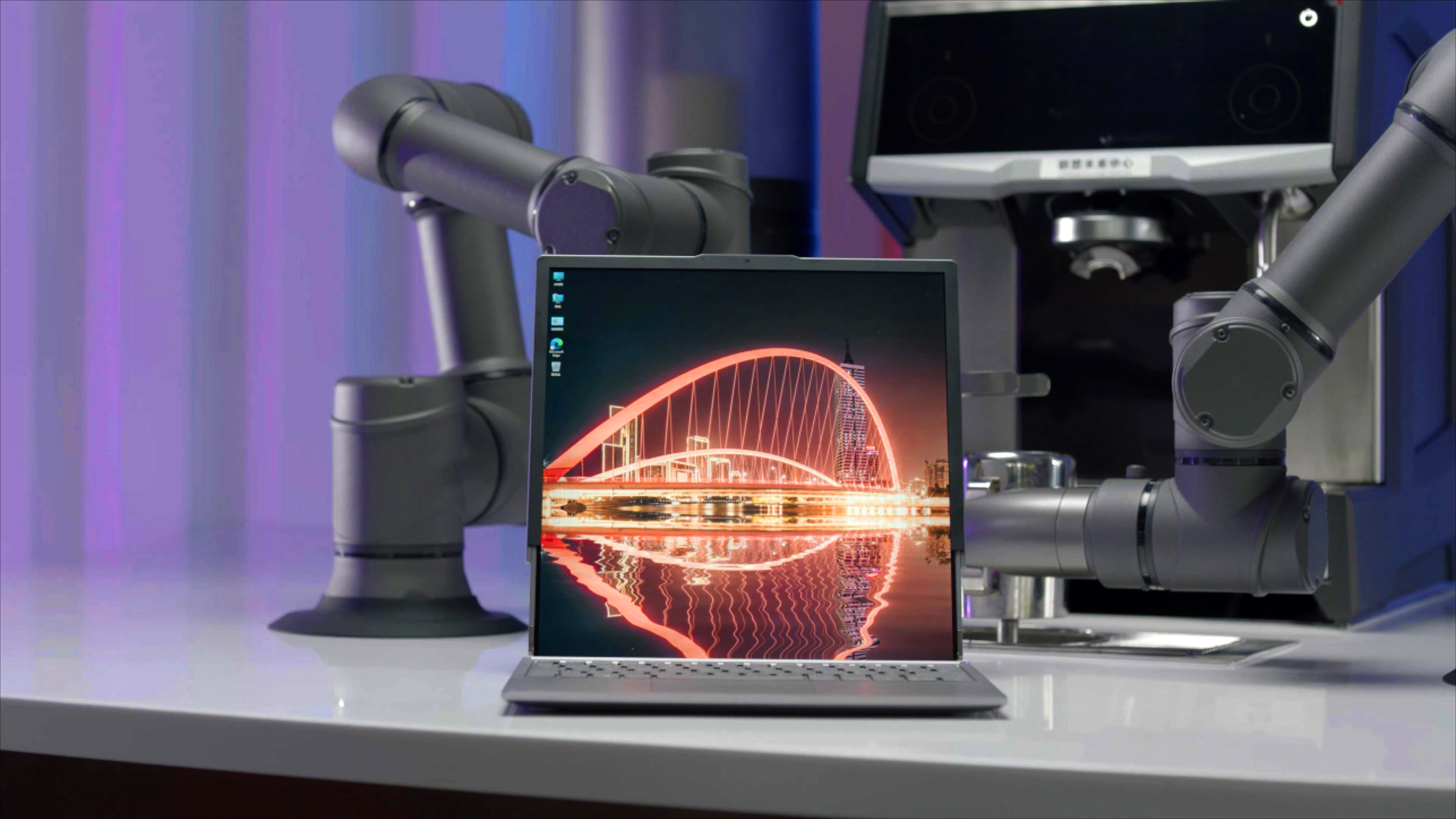
For a company whose laptops are best known for their boxy black aesthetics, Lenovo has steadfastly embraced the understated appeal of its ThinkPads. Rather than chase after the fickle tastes of millennials and ever-changing whims of Gen Z with colorful clamshells, Lenovo stubbornly iterated and perfected the innocuous squared-off design – which was inspired by the simplicity of the Japanese bento box – to become the gold standard among business crowds.
But whatever preconceived notions of Lenovo you may have had, you should put them aside. Lenovo radically broke out of its bento box in 2019. That year, the company found the courage to think beyond the ThinkPad to become the first PC company to embrace foldables with the first-generation ThinkPad X1 Fold.
Lenovo: The journey for new form factors begins
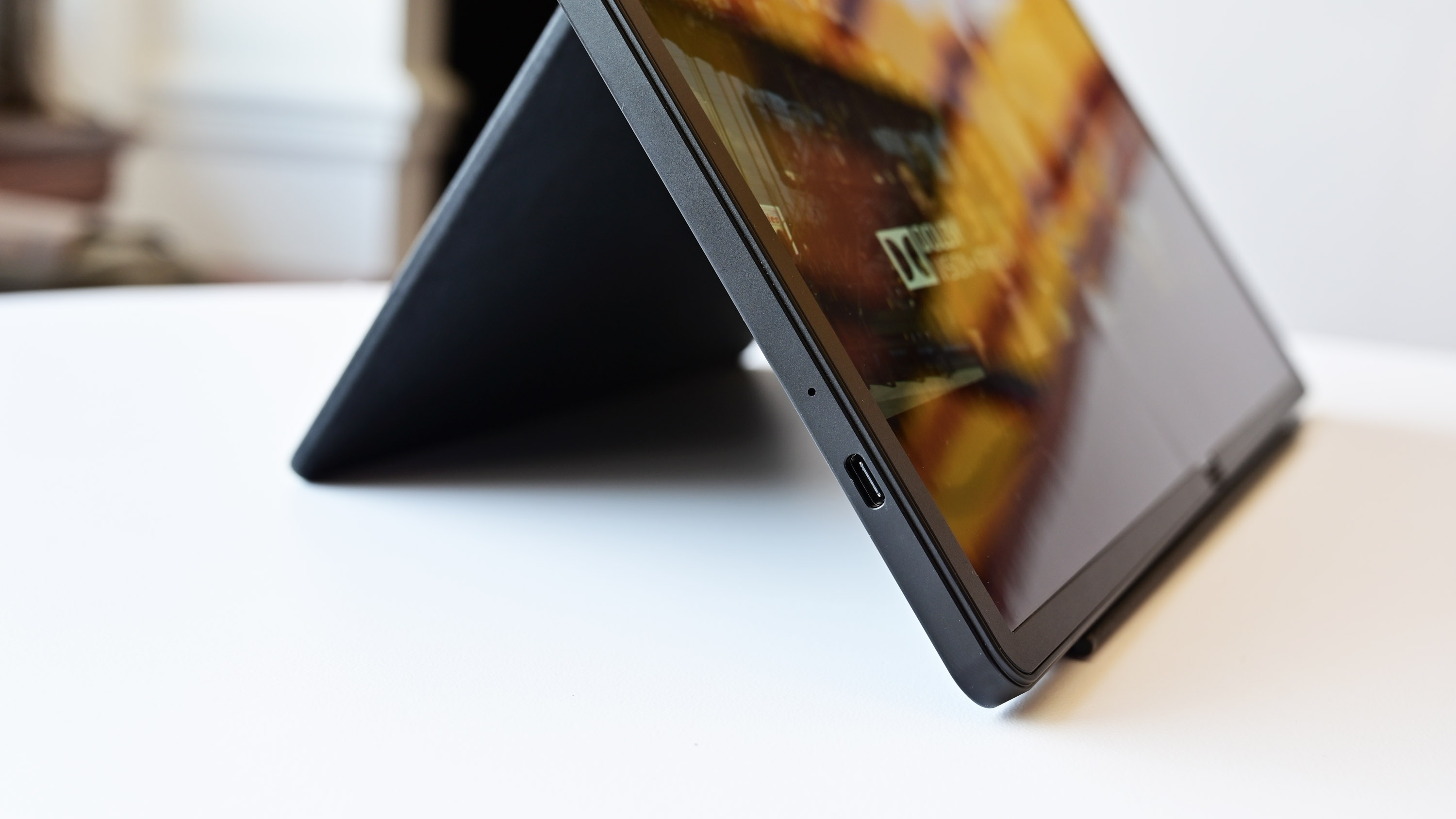
Despite launching to consumers in 2020 right before the pandemic began, Lenovo's journey to the X1 Fold began even earlier. Three years prior to the debut of the ThinkPad X1 Fold, Lenovo, along with smartphone subsidiary Motorola, began its exploration of novel form factors to see how much more innovation it can drive in the PC space.
“So we actually started looking in late 2016, early 2017, what could be done with the technology because we want to innovate for value, not just for innovation sake,” Lenovo Chief Technology Officer Daryl Cromer told Windows Central on a call during the company’s Tech World 2022 conference. “So we started doing study groups and we did mock ups.”
The company’s foray into the foldable space began with three different devices – a tablet, a PC, and a phone – which they tested with different user research groups. Ultimately, despite claiming the trophy for being first to market with the ThinkPad X1 Fold – a product that had not only undergone a major update in 2022 but saw a new competitor in the space in the form of the Asus ZenBook 17 Fold – Lenovo isn't just sitting still and it wants to continue to explore how emerging form factors can deliver new experiences to unlock value for PC users.
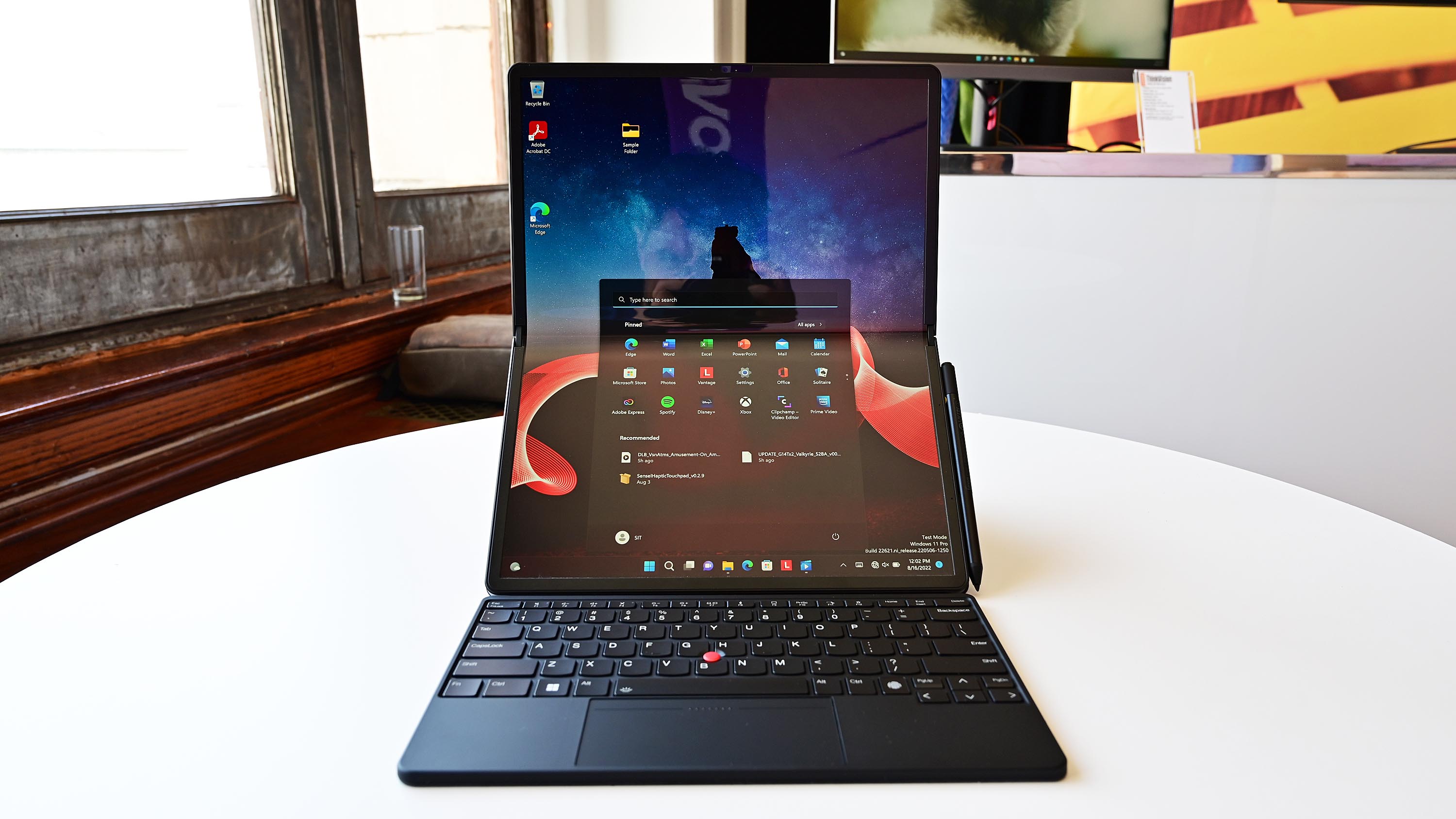
“We just looked at what would give this value to customers,” Cromer continued of Lenovo’s thinking process behind choosing the right technology to drive innovation. “And that kind of started the journey because we think about displays as it's transformed the business over the years. Anytime there's a display technology or a new type of technology, [we look at what can] be done with the technology, but more importantly, how will it solve customers problems and pain points.”
With the first generation of foldables, that pain point is to give consumers a larger display in a more mobile form factor, which Cromer coined as carry small, see big.
Get the Windows Central Newsletter
All the latest news, reviews, and guides for Windows and Xbox diehards.
“The role of all foldables in that whole space provides that capability because you're able to carry something smaller, but use it better because of that screen size,” he added.
Products like the ThinkPad X1 Fold and Lenovo’s concept rollable laptop – when and if it ever will hit the market – must fulfill a role that’s currently not addressed by the market. For Lenovo, that role is better mobility and increased productivity. These form factors, Cromer said, allow you to travel with a more compact device but still deliver a large-screen computing experience when you need to get work done.
It was unfortunate that the first-generation Fold debuted at CES 2020 right before the start of the global pandemic. As the world went into lockdown, the merits of carrying a small form factor device that can expand to a larger canvas went unrealized. Still, Lenovo forged on its path, and the company remains confident in its investment in this nascent form factor.

And as the company looked beyond foldables – Lenovo introduced its rollable laptop concept earlier this month at Tech World 2022 by showing off this novel form factor inside Cyber Space, the company’s name for its version of the metaverse – Cromer claimed that the formula for innovation remains the same.
“So although the technologies look very different, some of the core fundamental issues we started looking at 2016 are still some of the fundamental issues we're looking at today,” he said of the similar challenges in getting foldables and rollables to the market. “So it's been a kind of an evolution of the technology, the mechanicals, the system design as we move forward. It's just kind of continuing now that evolution but in doing so it gives a customer a larger screen size.”
If you think the idea and reported benefits of these new PC form factors sound familiar, it is because it actually is. Samsung’s Galaxy Z Fold debuted around the same time and rival LG actually showed off a rollable smartphone concept before unwinding its mobile division and canceling the project. Lenovo admits it is watching adjacent spaces to the PC market to see what is happening, and it evaluates whether these advances can bring value to its core computing business.
And before new devices are actually introduced to the world, they’re conceived by designers and engineers three to five years in advance. This timeline means that work on the rollable prototype began as early as 2017.
When Lenovo approaches new form factor designs, the company has conversations with all of its suppliers to find the best solutions and approaches to use. All parties see what’s available and help mitigate some of the challenges of the new form factor designs.”
“So we look at what's possible from our suppliers and what our customers want,” Cromer explained. “And then we try to figure out how to bridge that gap. And you'll see some people do it very well, some not so well.”
Lenovo: The ThinkPad heritage
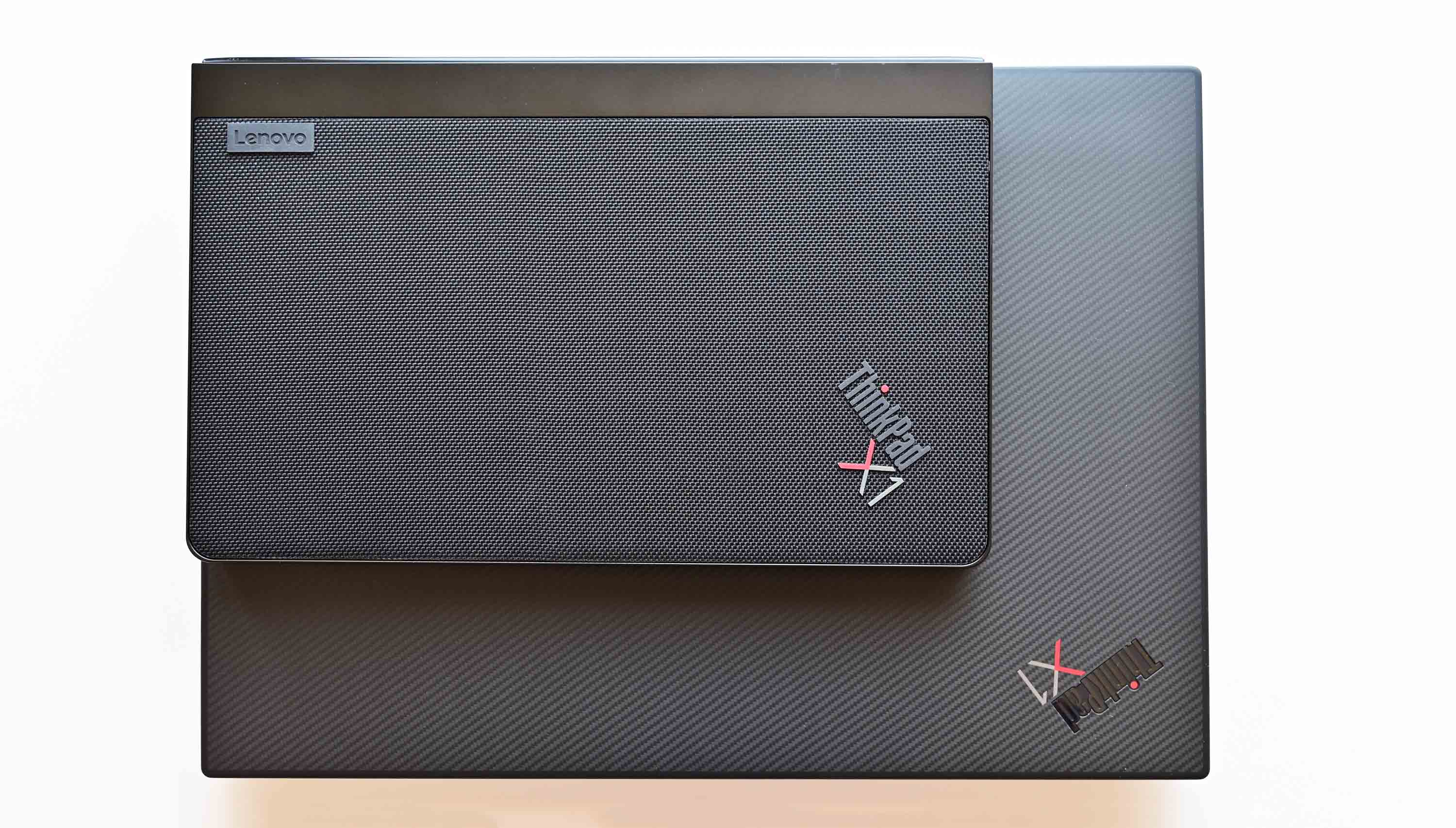
In designing foldables, Lenovo couldn’t deviate too far from the tried and true formula that propelled it to become one of the largest PC manufacturers in the world. Even though the X1 Fold debuted with a new screen technology that enables the novel foldable form factor, Lenovo had to still deliver on the key attributes that make the ThinkPad brand familiar, including reliability.
“Lenovo is known for the ThinkPad product line reliability, rugged, thinness, quality – so how can we take a new technology and deliver on those core attributes,” Cromer rhetorically asked, noting that displays that can fold and roll must be tested for durability. The company tested the hardness of the display and its resistance to scratching, tearing, and breaking. “So we have to have a palette; so we have to reinvent a lot of the things we do to protect the display.”
For the rollable concept, Lenovo had gone through numerous prototypes to refine the mechanism that rolls and extends the display.
“If you want somebody that stretches or rolls out, you have to deal with a couple elements,” Cromer explained of the rollable’s mechanism. “One is how do you extend the display smoothly, keep tension on it, support it – all those pieces – and make sure that you don't have any ridges as you run your hand across all those pieces.”
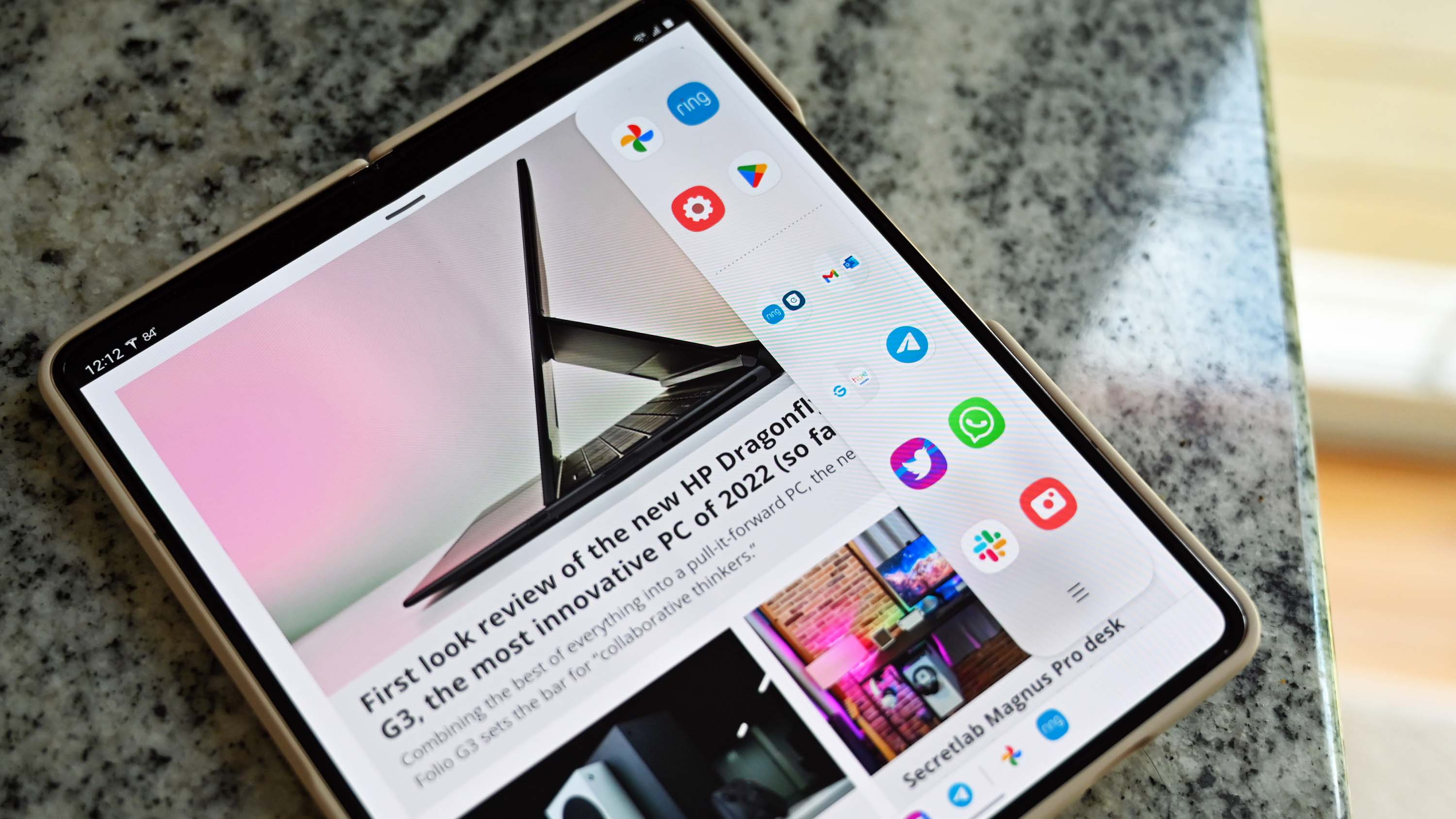
The ridge, otherwise known as the crease, has been a divisive design decision that rival Samsung had embraced on its foldable Galaxy Z Fold series. While competing smartphone manufacturers have devised designs that minimize the screen crease, Samsung has stubbornly defended the presence of the crease as part of a design that helps the phone achieve its water resistance rating.
“Which gets you get the mechanism to extend the tension to unwind,” Cromer continued. “So, the first part is kind of the macro discussion of what is the core mechanism we want to do – what it would be in the form of the case of the hinge.”
Lenovo experimented with multiple concurrent hinges in its design process to find the best solution. The company tested and improved on the various hinge designs, and ultimately settled on a hinge that utilized the best parts of its various different concepts.
"And then we want to run it through all our existing tests," Cromer said. "But also we had to create new tests. So to go through and validate this as we go through the testing process is legendary because what we do is we test every time we find a failure. Then we create new test cases to cover that. Those just become part of the standard test going forward. Every time we have new technology, a new method, a new mode, a new material, we have the test experts sit down and look at how can we break it."
All these iterations and revisions have resulted in numerous design changes to the prototypes as Lenovo worked on its emerging form factors.
“The amount of design effort in there is really where the innovation would be – how to protect the screen by a panel behind the display for thickness,” Cromer said of the rollable’s design. “All those elements are really where the magic occurs. And then we will do numerous innovations and changes on that and test and look for reliability and stability.”
At this point, the rollable laptop is still a proof-of-concept, and it’s unclear if it will either get the ThinkPad or Yoga branding. If it does get the ThinkPad name, it, too, will have to live up to the brand’s reputation for rugged durability, which means you’re going to get a machine with an impeccable keyboard, a system that can withstand the elements, and a productivity powerhouse that means business.
Lenovo: Innovating on software and hardware
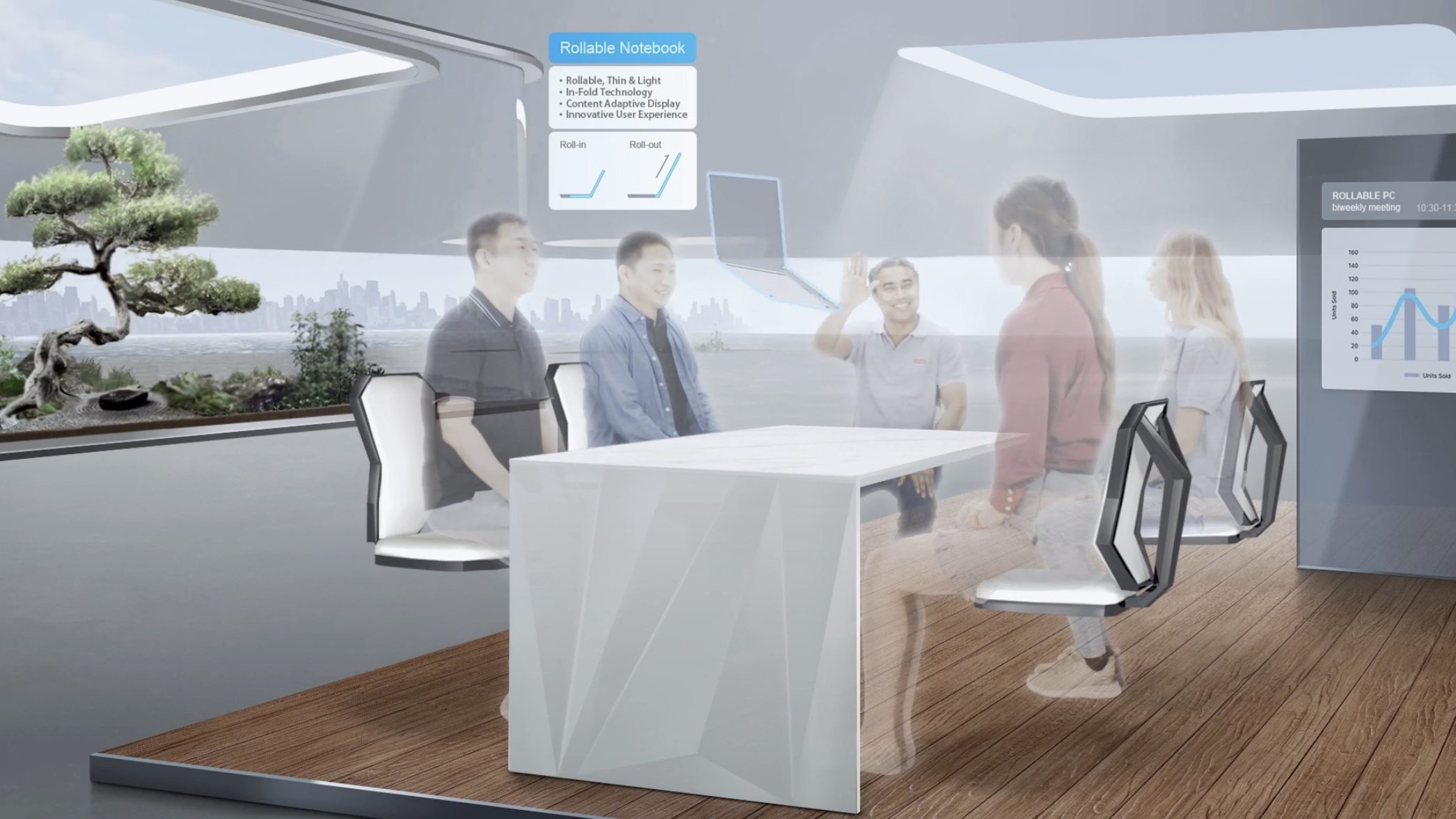
And to help its rollable PC fulfill its promise of delivering more value to users, Lenovo said that it is working with all of its software partners – including Microsoft – on delivering new experiences.
“That's kind of an ongoing conversation because we're both committed to delivering great experiences and driving innovation,” Cromer said of Lenovo’s close partnership with the Windows-maker, noting that the two companies are working on delivering ways to enable new experiences and unlock more productivity with new form factors. “We need to make certain that it works in conjunction with their applications.”
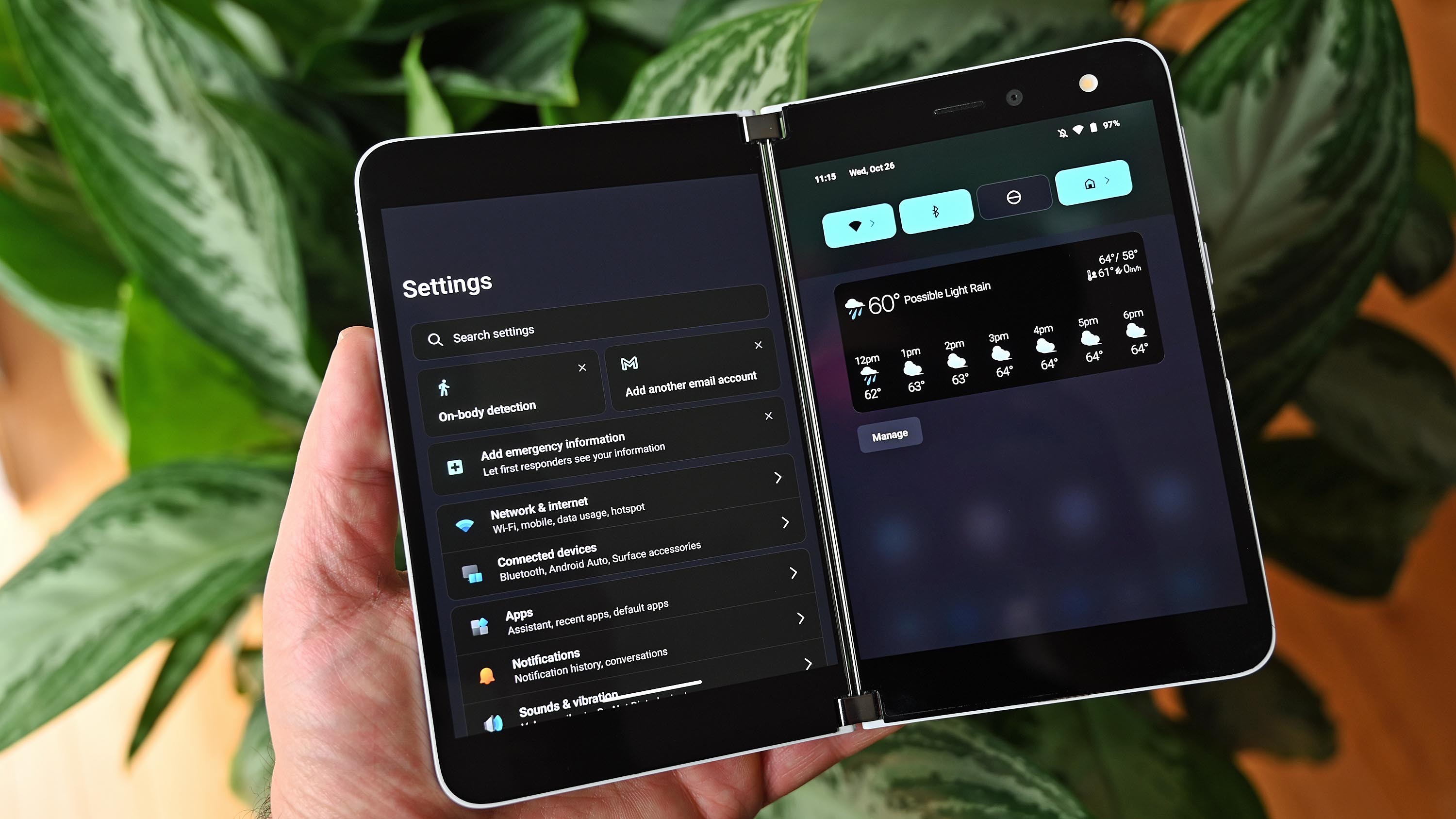
On the smartphone side, Google has also made improvements to its mobile operating system to take advantage of new form factors, adding additional capabilities to the Android 12L OS. Microsoft recently updated its Surface Duo smartphones to Android 12L to take advantage of these new user experiences for its dual-screen device, and Motorola rival Samsung also debuted its own unique user experiences that take advantage of large folding displays on the latest Galaxy Z Fold 4 and Z Flip 4 smartphones.
Other than the benefit of having a large display that can easily stow for travel, Lenovo did not provide specific details of the software experiences that it hopes to deliver on the PC side nor did it provide any examples of how Windows will evolve to take advantage of this new form factor.
One use case for rollable display technology that Lenovo executives showed off on stage at Tech World is dynamic screen sizing on a Motorola phone concept. With the rollable display, the screen extends in landscape orientation, which means that the display gets wider. And as part of the demo, Lenovo showed that videos and other content can be extended dynamically to fill the screen with fluid, smooth animations. The aspect ratio dynamically changes and adjusts as the content is zoomed in or out as the screen’s dimensions change.
On the laptop, the screen gets taller, instead of wider, as it does on the phone. The reason for extending the screen vertically is because the keyboard is fixed, Cromer explained. Additionally, Lenovo’s focus groups revealed that people do more with a taller display in terms of productivity, and perhaps this is why Microsoft settled on a 3:2 aspect ratio on its line of Surface Pro tablets.
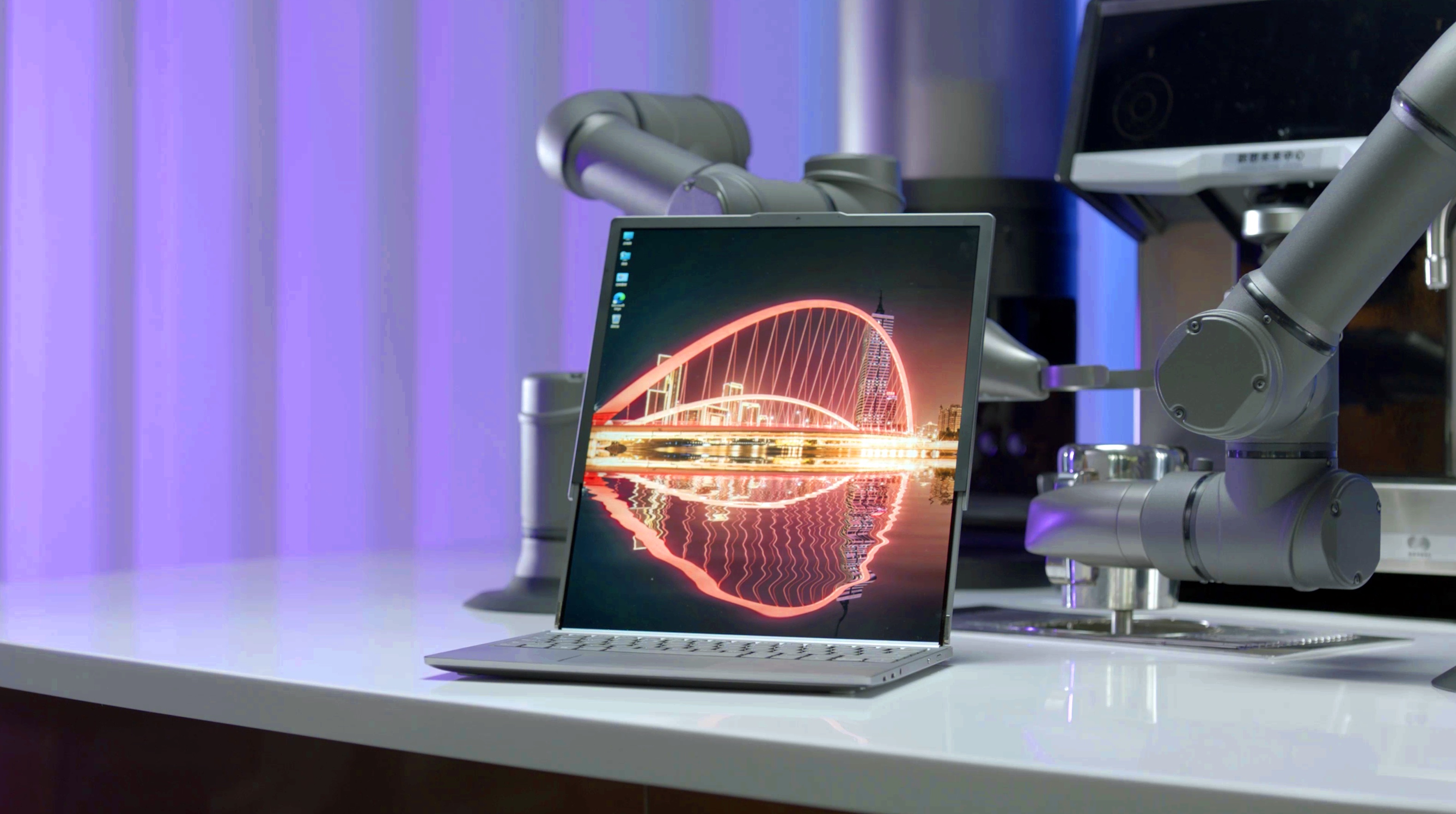
“So at least when I work on stuff, I do a lot more scrolling up and down versus panning left and right, so it seems that the larger view is up and down,” Cromer explained of the vertically extending rollable laptop screen. “Now whenever people do some of the multi-monitors, they'll go left to right, but that is doing different windows. But you don't see it often on a single window that spans across multiple monitors.”
Though not as transformative as the folding or rolling mechanisms themselves, the OLED screen panels that drive these form factors also play into Lenovo’s strategy to reach new users where traditional form factors would have made technology inaccessible in the past.
“The key to driving inclusivity and accessibility for new form factors such as foldables and rollables is the foldable OLED,” Cromer said of Lenovo’s investment in screen technologies. “OLED’s bigger contrast range helps improve visibility for a wider range of users. Both rollable and foldable device form factors also allow for a smaller footprint with the option to expand to a bigger screen, which can make a difference for people who are vision impaired.”
Lenovo: The pillars of innovation
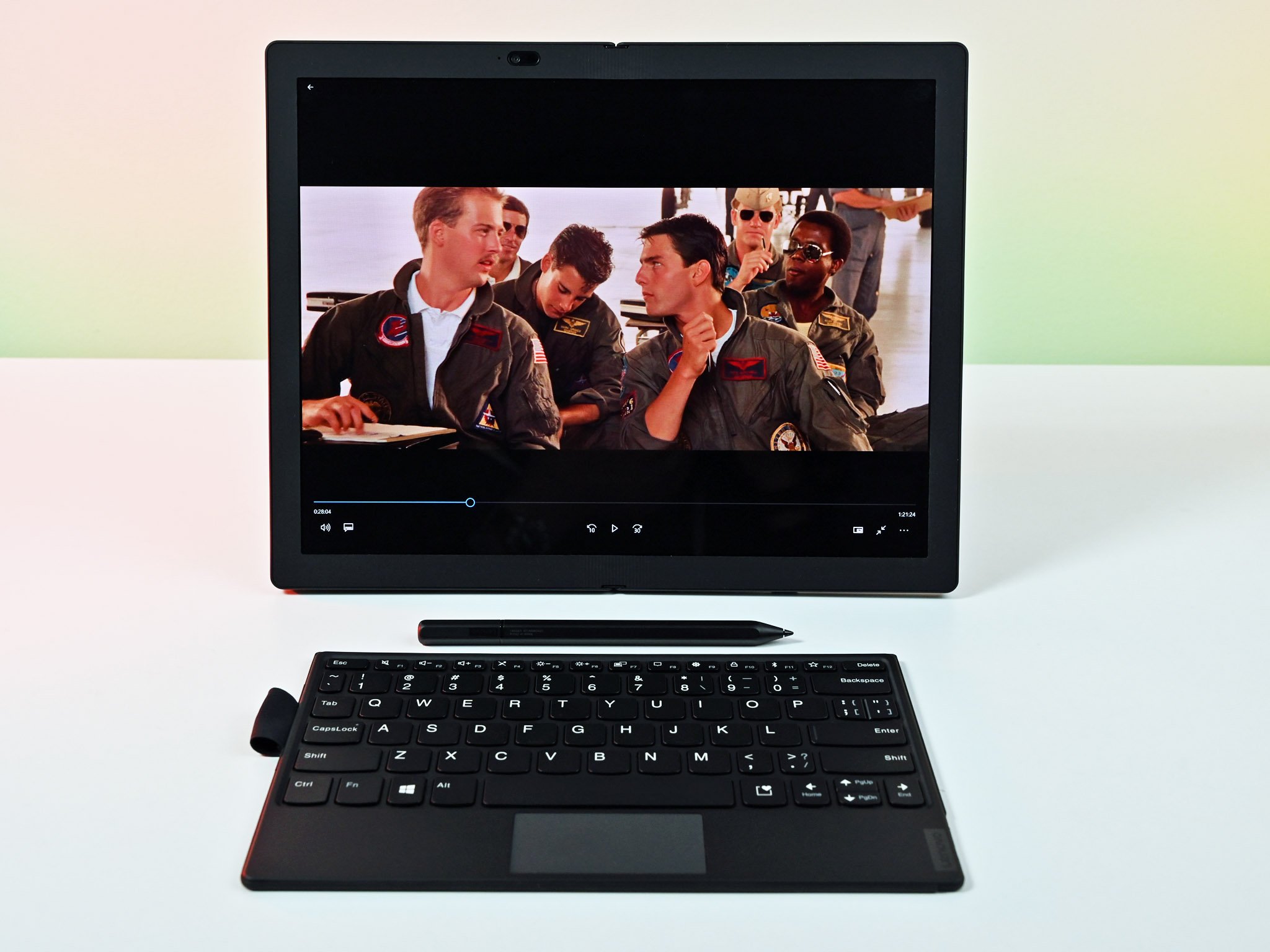
So how does Lenovo choose the right technologies to invest in, especially when the company is exploring new form factors? Cromer informed us that Lenovo looks at three pillars when it considers technological innovation across its slate of products, including ThinkPad and Yoga brands.
The first pillar is delivering innovations that will affect the core experiences. These include improving wireless connectivity and speeds generation-over-generation, making gains in battery life, and providing a solid display. Lenovo, like most of its peers in the tech space, delivers on this pillar with annual refreshes of its laptops and desktops with new silicon from partners that bring faster performance, better connectivity, and longer battery life.
The second pillar involves critical technologies that will drive change and transformation going forward. For example, on some of the latest ThinkPad devices, Lenovo adds in presence detection, which detects if you're in front of the display to keep the screen on and auto-lock your PC for privacy when you step away. There are also privacy alert and privacy guard features that warn you when someone is looking over your shoulder. And some of Lenovo's displays can even blur the screen to protect sensitive information and data when you look away from the monitor. All Lenovo's smart, proprietary features are driven by artificial intelligence.
And finally, there are disruptive technologies. Disruptors include the new displays and screen mechanisms that Lenovo is working on for foldable and rollable form factors. Disruptive technologies drive Lenovo's emerging form factors.
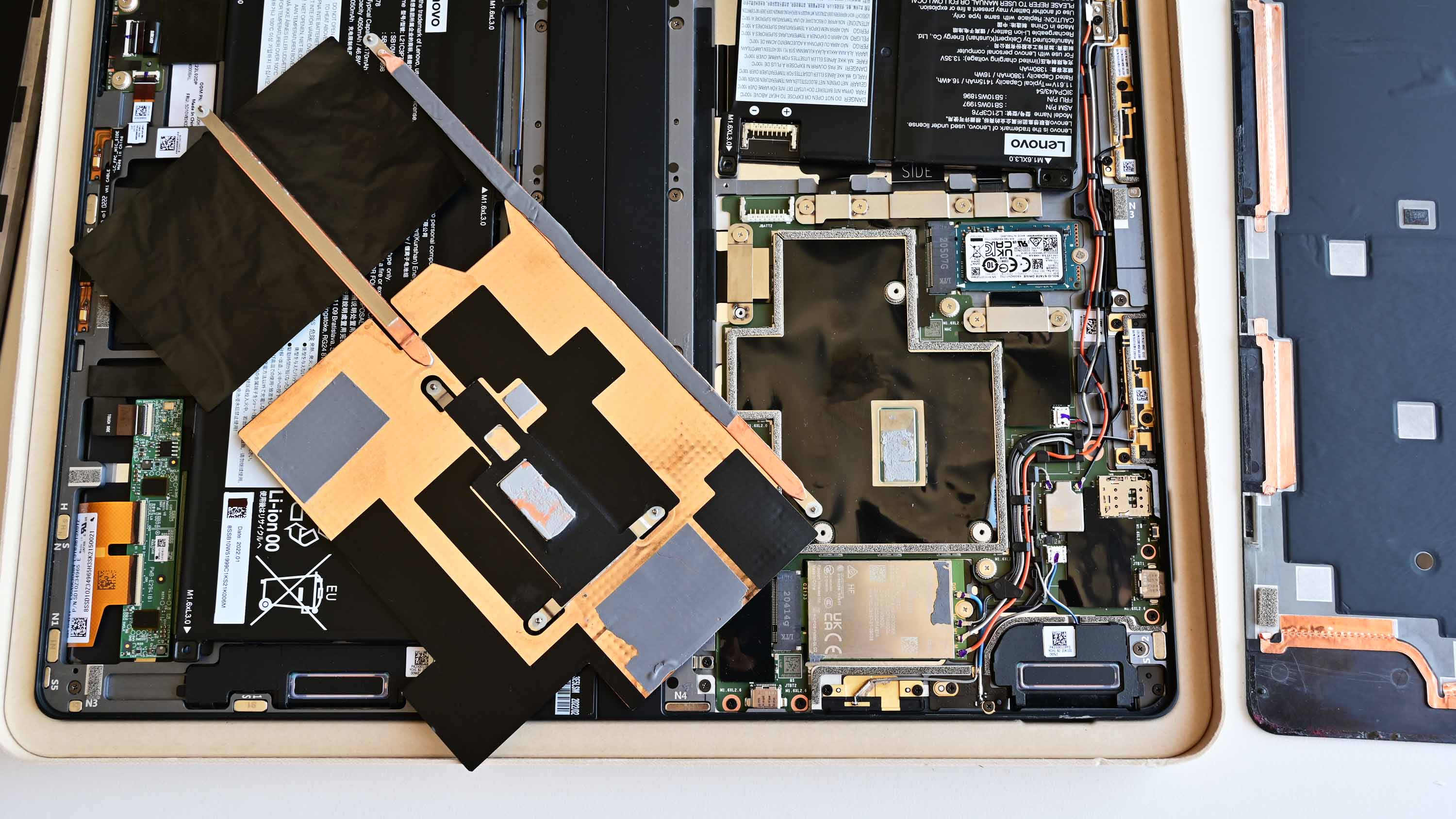
“These are ones that could potentially, if you do it right, do very well in the market,” Cromer said. “If you miss it, it's a challenge.”
In 2016, Lenovo found that foldables will be the new market disruptors because these displays can change the way you work.
And while Lenovo is pushing out new form factors, Cromer doesn't foresee a future without the traditional form factors of today. Lenovo's approach isn't a zero-sum game where new form factors squeeze out clamshells and desktops. Instead, the technologies, including the metaverse, that Lenovo highlighted at Tech World 2022, all serve as extensions to the familiar form factors we know today, according to Cromer.
“At the end of the day, the market is expanding – the number of customers we have is expanding and their needs are expanding,” he said. “So we're actually adding devices. So I don't see a foldable or rollable replace the clamshell. These are basically another category of a clamshell.”
Cromer sees all these solutions as a continuum that extend the traditional computing experience.
"At some point, we'll look back, and 10 years from now we'll go, it's been very transformative," Cromer said of all these new form factors and technologies. "I think time will tell. But I do see impacting the designs and solution that how we think about things."
Though the company would not disclose how many foldables it has on the market today, citing competitive reasons for keeping its data under wraps, Lenovo said it was pleased with its investment in the technology, the adoption rate of foldables, and the public reception of these new form factors. In fact, Cromer anticipates that the second-ten Lenovo X1 Fold, introduced earlier this year, will sell in even greater volume. Lenovo reiterated that rollables are still a concept at this point.
Lenovo: The tipping point
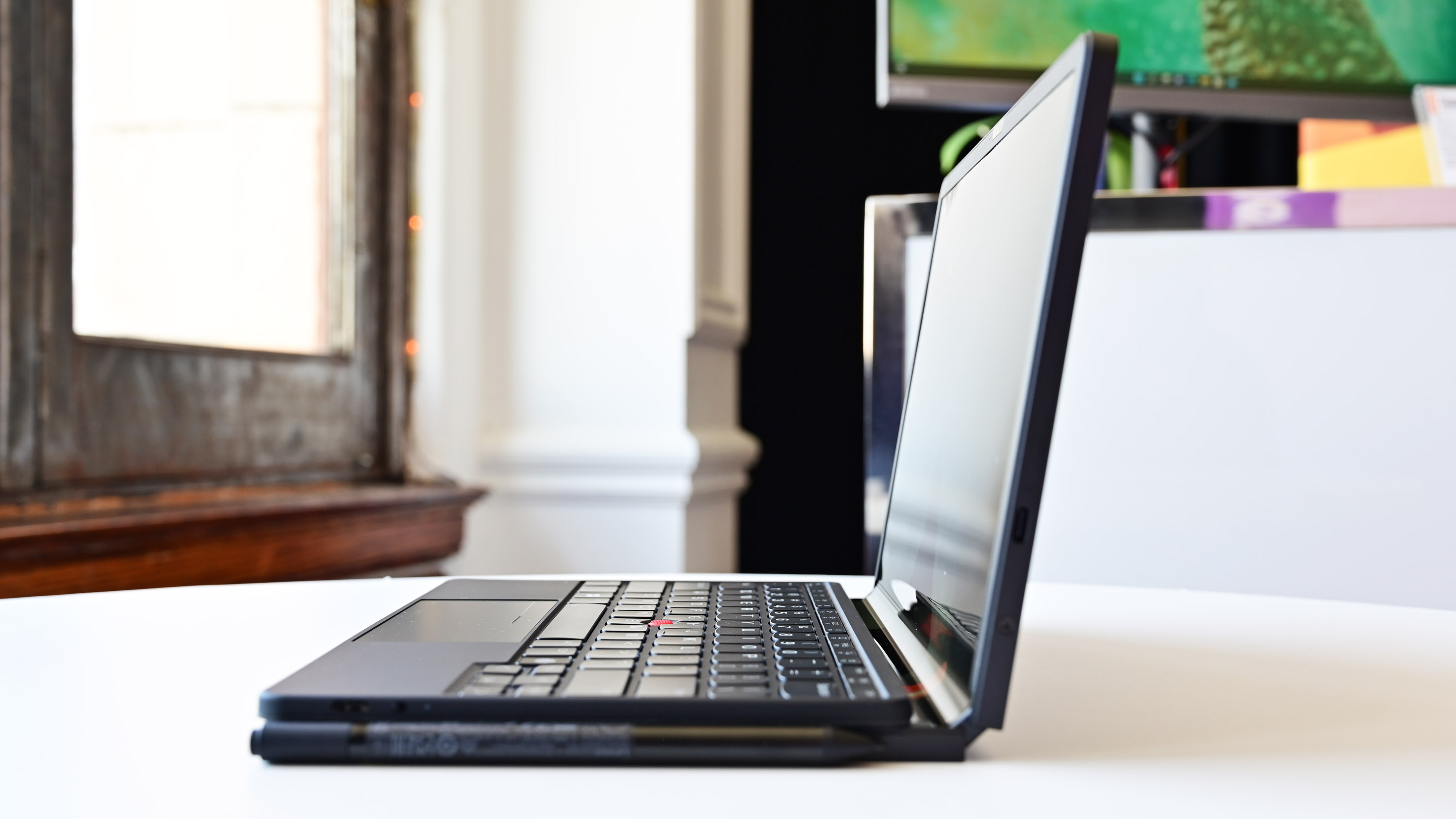
And while the appeal of a foldable or rollable PC is there, the problem with new form factors is pricing. Packed to the brim with the newest technologies, Lenovo's foldables are expensive to purchase. However, with more competition in the space, we may soon see prices begin to creep downward.
“We recognize that the biggest barrier to entry for mass adoption of ultra-innovative or premium new form factors is cost,” Cromer said. “When volumes increase, the economy of scale results in more sales and lower prices. But this isn’t specific to just foldable or rollable devices – any new, breakthrough innovation with highly complex design and engineering often face this challenge when first coming to market.”
In fact, despite rising competition in this space – Samsung also recently introduced its own slidable concept PC and Asus is making a big push with its foldable PC – Lenovo seems encouraged by the growth of new form factors.
The company said that it welcomes the competition, as this will help drive future innovation in the space and help these new form factors reach economies of scale.
The tipping point for foldable PCs, according to Cromer, will follow the same trajectory as those of foldable smartphones. And given that Samsung is making inroads in that space with its Galaxy Z Fold and Galaxy Z Flip series, Lenovo’s emerging form factor PCs appear to have a bright future ahead.
In some ways, it may seem ironic that Lenovo, which has often been criticized for the unchanging design of the ThinkPad, is the one to lead the charge on emerging PC form factors. But the simple black box that shapes the ThinkPad is seemingly the perfect canvas to both showcase and juxtapose the exciting new technologies that drive Lenovo’s innovation.
Having stewarded the ThinkPad brand for the past thirty years, Lenovo recognizes it doesn't have to partake in some of the fleeting fads that drive products from some of its competitors. Innovations like the 360-degree hinge on the Yoga, which is now pervasive on Windows convertibles and Chromebooks, prove that Lenovo is both an innovator and a pioneer where it matters, but it does so with a respect to its own heritage.
Chuong's passion for gadgets began with the humble PDA. Since then, he has covered a range of consumer and enterprise devices, raning from smartphones to tablets, laptops to desktops and everything in between for publications like Pocketnow, Digital Trends, Wareable, Paste Magazine, and TechRadar in the past before joining the awesome team at Windows Central. Based in the San Francisco Bay Area, when not working, he likes exploring the diverse and eclectic food scene, taking short jaunts to wine country, soaking in the sun along California's coast, consuming news, and finding new hiking trails.

